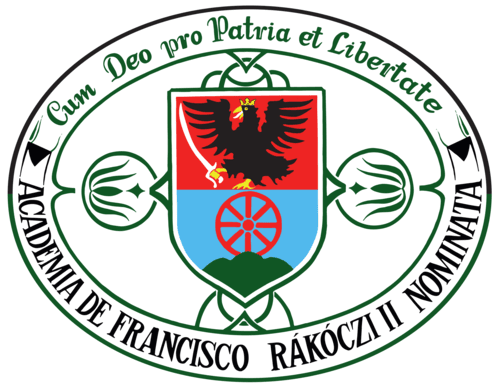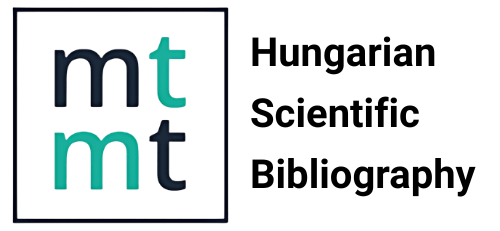Good practices of pedagogical translanguaging: A global overview of emergence, development, and classroom applications
DOI:
https://doi.org/10.58423/2786-6726/2024-2-139-152Keywords:
Transcarpathia, translanguaging, pedagogical translanguaging, multilingualism, educationAbstract
This paper deals with the concept of translanguaging as a powerful tool for fostering inclusive education in linguistically diverse settings. Translanguaging, unlike traditional views of languages as separate, bounded systems, recognizes the flexible, integrated nature of multilingual communication. It highlights how speakers draw from their entire linguistic repertoires to construct meaning, depending on context and need.
The paper aims to provide teachers in Transcarpathia with a comprehensive understanding of translanguaging and its pedagogical applications. It explores the historical development of the concept, its key characteristics, and its differentiation from code-switching. The paper also discusses the theory and practice of pedagogical translanguaging, highlighting its benefits for both teachers and students. It presents examples from various countries, including the United States, Italy, and South Korea, to illustrate how pedagogical translanguaging has been implemented in different educational contexts.
One of the core principles of translanguaging is that all languages are valuable and can be used to support learning. Teachers can create a more inclusive and equitable classroom environment where all learners feel valued and respected via accepting this principle. Translanguaging can also help students to develop a deeper understanding of the world around them by allowing them to connect their experiences across different languages and cultures.
In addition to its benefits for learners, translanguaging can also be a powerful tool for teachers. By using translanguaging strategies, teachers can create more engaging and interactive lessons that are relevant to their students’ everyday lives. Translanguaging can also assist teachers to develop their own language skills and to become more culturally sensitive.
While the implementation of translanguaging in the classroom may require some initial training and planning, the benefits are well worth the effort. This paper provides valuable insights and practical guidance to support teachers in harnessing the power of translanguaging to enhance language acquisition, content comprehension, and overall student success.
References
Brubaker, Rogers 2006. Nationalist Politics and Everyday Ethnicity in a Transylvanian Town. Princeton: Princeton University Press.
Canagarajah, Suresh 2018. Translingual practice as spatial repertoires: expending the paradigm beyond structuralist orientation. Applied linguistics 39/1: pp. 31–54.
Cenoz, Jasone – Gorter, Durk 2015. Multilingual education: Between language learning and translanguaging. Cambridge: Cambridge University.
Cenoz, Jasone – Gorter, Durk 2021. Pedagogical translanguaging. Cambridge: Cambridge University Press.
Creese, Angela – Blackledge, Adrian 2010. Translanguaging in the bilingual classroom: A pedagogy for learning and teaching? Modern Language Journal 94: pp. 103–115.
Faltis, Christian 2020. Pedagogical codeswitching and translanguaging in bilingual schooling contexts: Critical practices for bilingual teacher education. In: MacSwan, Jeff – Faltis, Christian eds. Codeswitching in the classroom: Critical perspectives on teaching, learning, policy, and ideology. New York – London: Routledge. pp. 39–62.
García, Ofelia 2009. Education, multilingualism and translanguaging in the 21st century. In: Mohanty, A. – Panda, M. – Philipson, R. – Skutnabb-Kangas, T. eds. Multilingual education for social justice: Globalising the local. New Delhi: Orient Blackswan.
García, Ofelia – Kleyn, Tatyana 2016. Translanguaging theory in education. In: García, Ofelia – Kleyn, Tatyana eds. Translanguaging with multilingual students: Learning from classroom moments. New York – London: Routledge. pp. 9–33.
García, Ofelia – Lin, Angel 2017. Translanguaging in bilingual education. Bilingual and Multilingual Education: pp. 117–130.
García, Ofelia – Otheguy, Ricardo 2021. Conceptualizing Translanguaging Theory/Practice Juntos. In: Translanguaging and transformative teaching for emergent bilingual students. Lessons from the CUNY-NYSIEB Project. London –New York: Routledge. pp. 3–24.
García, Ofelia – Wei, Li 2014. Translanguaging: Language, Bilingualism, and Education. London: Palgrave Macmillan.
García, Ofelia – Woodley, Heather 2015. Bilingual Education. In: Bigelow, Martha –Ennser-Kananen, Johanna eds. The Routledge Handbook of Educational Linguistics. New York – London: Routledge. pp. 132–144.
Gort, Mileidis 2020. Young emergent bilinguals’ literate and languaging practices in story retelling. In: MacSwan, Jeff – Faltis, Christian eds. Codeswitching in the classroom: Critical perspectives on teaching, learning, policy, and ideology. New York – London: Routledge. pp. 162–183.
Henderson, Kathryn – Sayer, Peter 2020. Translanguaging in the classroom: implications for effective pedagogy for bilingual youth in Texas. In: MacSwan, Jeff – Faltis, Christian eds. Codeswitching in the classroom: Critical perspectives on teaching, learning, policy, and ideology. New York and London: Routledge. pp. 207–224.
Hires-László, Kornélia 2015. Linguistic landscapes and ethnicity in Beregszász. In: Márku, Anita – Hires-László, Kornélia eds. Language teaching, bilingualism, language landscape. Studies from the Linguistics Research Center of Antal Hodinka I. pp. 160–185.
Lewis, Gwyn – Jones, Bryn – Baker, Colin 2012. Translanguaging: origins and development from school to street and beyond. Educational Research and Evaluation 18/7: pp. 641–654.
Otheguy, Ricardo – García, Ofelia – Reid, Wallis 2015. Clarifying translanguaging and deconstructing named languages: A perspective from linguistics. Applied Linguistics Review 6/3: pp. 281–307.
Poza, Luis 2017. Translanguaging: Definitions, implications and further needs in burgeoning inquiry. Berkeley Review of Education 6/20: pp. 101–128.
Rabbidge, Michael 2020. Translanguaging in EFL contexts: A call for change. New York – London: Routledge.
Saville-Troike, Muriel 2012. Introducing second language acquisition. Cambridge: Cambridge University Press
Schwartz, Mila – Asli, Abeer 2014. Bilingual teachers’ language strategies: The case of an Arabic-Hebrew kindergarten in Israel. Teaching and Teacher Education 38: pp. 22–32.
Scibetta, Andrea – Carbonara, Valentina 2020. Translanguaging as a pedagogical resource in Italian primary schools: making visible the ordinariness of multilingualism. In: Lee, Jerry – Dovchin, Sender eds. Translinguistics: Negotiating Innovation and Ordinariness. New York – London: Routledge. pp. 115–129.
Simonsen, Hanne Gram – Karrebæk, Martha Sif 2019. Language Education Policies and Practices in Norway and Denmark: Fostering Linguistic Diversity? In: Kraus, Peter A. – Grin, Francois eds. The Politics of Multilingualism: Europeanisation, Globalisation and Linguistic Governance. Amsterdam: John Benjamins Publishing. pp. 89–114.
Tódor, Erika-Mária 2021. Language use during Romanian classes in bilingual settings. Acta Universitatis Sapientiae, Philologica 13/2: pp. 1–20.












